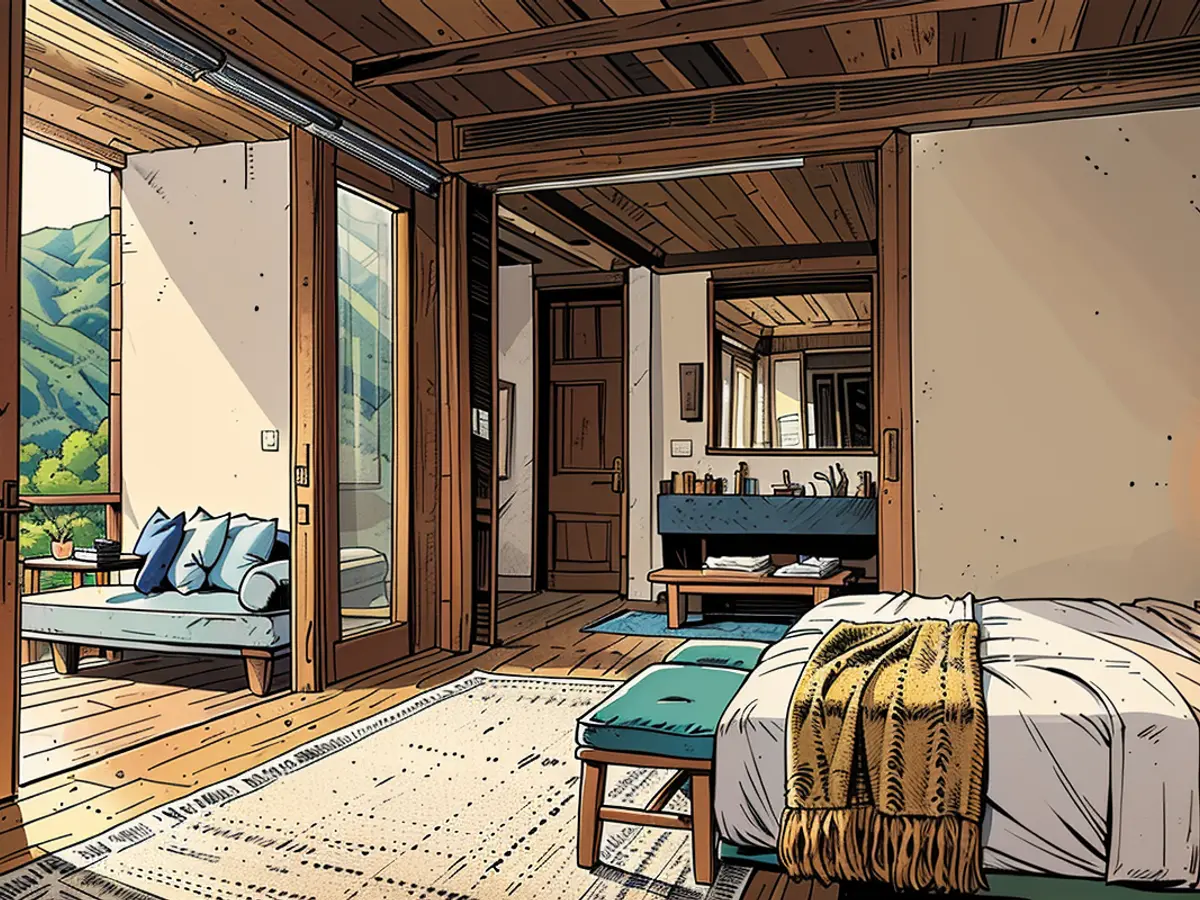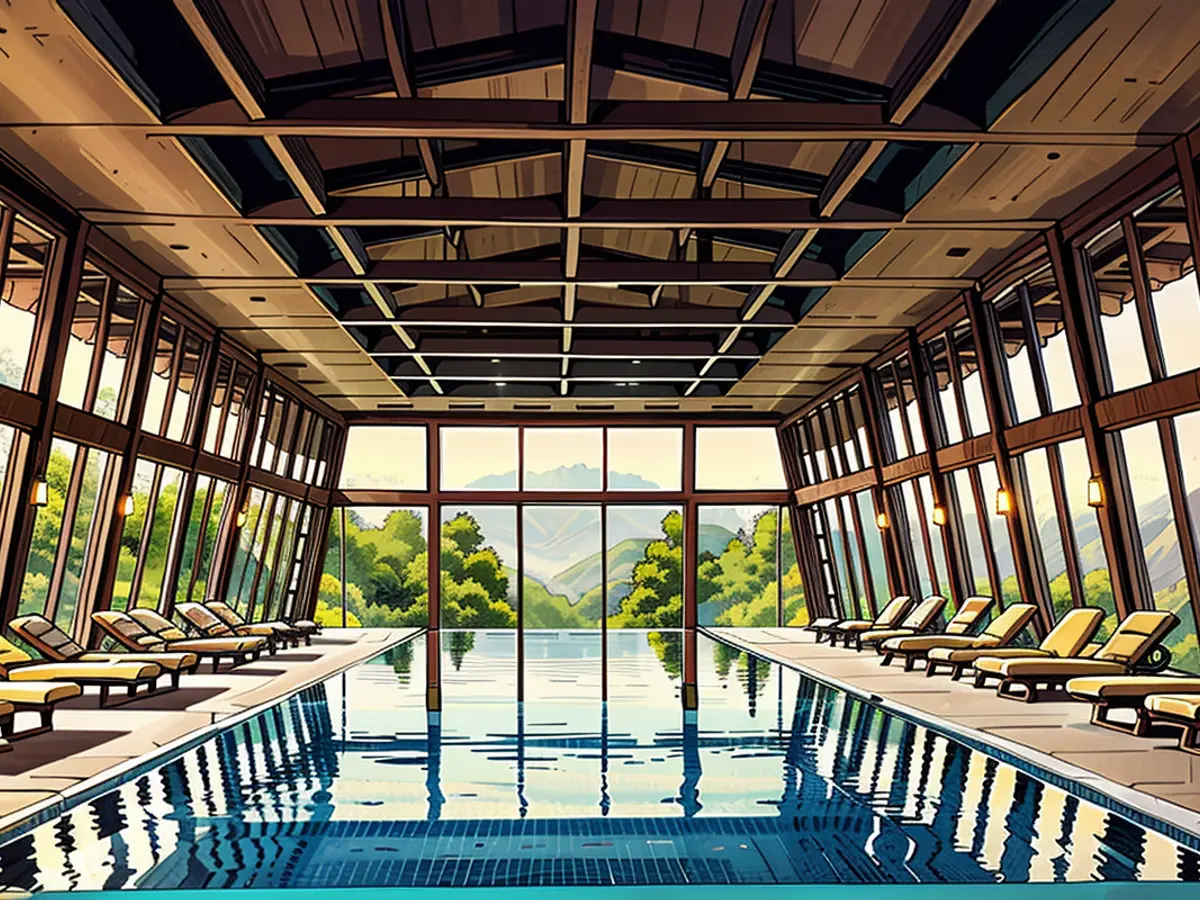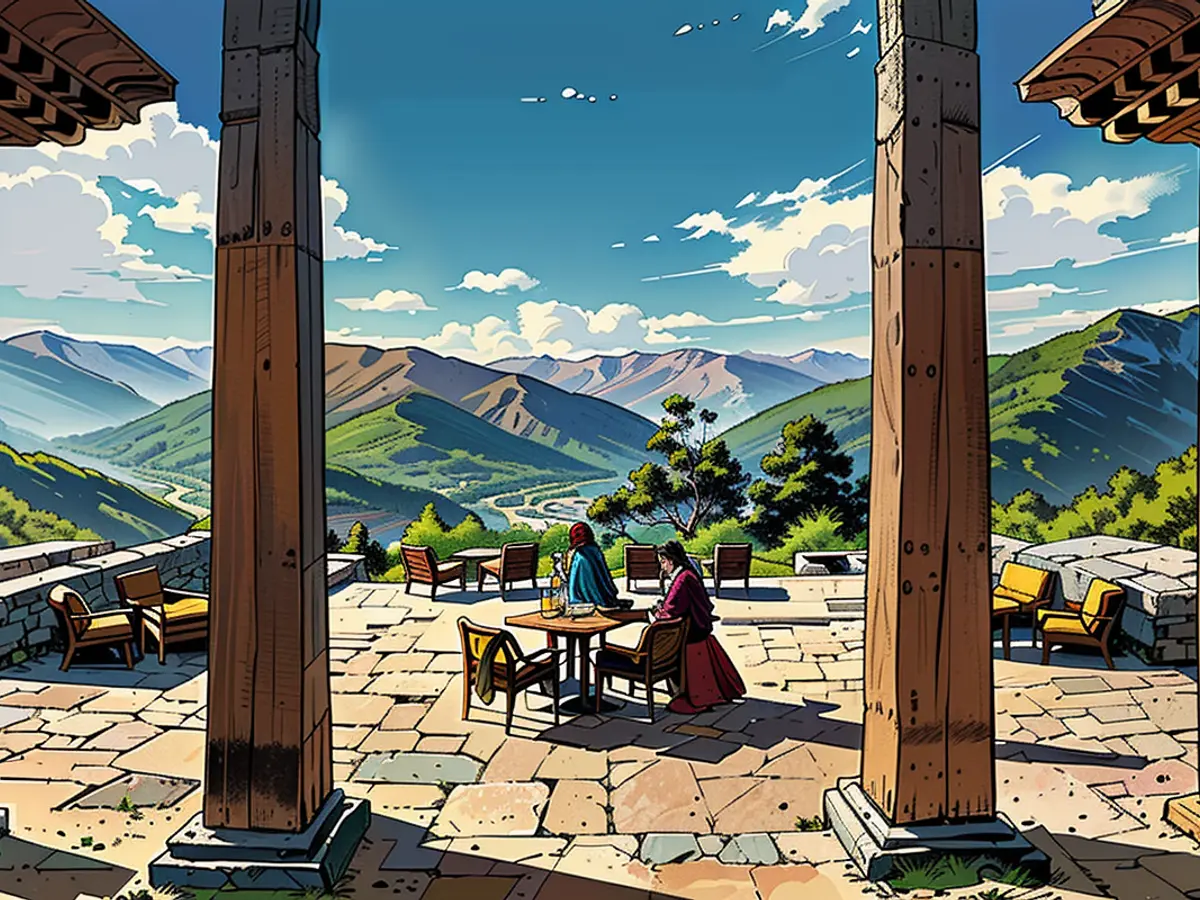Incarnate heavenly abode: Is the Bhutanese Monarch allegedly vacationing within these premises?
In the far-reaching kingdom of Bhutan, placed near the epic Himalayas, our author's curiosity was stirred. He embarked on a journey to this legendary realm known as "Druk Yul" or "Land of the Thunder Dragon" to scrutinize two "Six Senses" resorts. Amidst the rugged potholes and sacred mountain monasteries, he observed how nature, spirituality, and luxury seamlessly intertwined.
Bhutan is renowned for its unique approach to wealth, called "Gross National Happiness," prioritizing personal happiness. It has long since captivated my fascination, appearing an untouched sanctuary with its pristine natural beauty and profound spirituality. Bhutan is the sole nation globally with a beneficial carbon footprint, sequestering more carbon than it releases. This tiny Himalayan Ivory Tower is deeply dedicated to sustainability and actively endorses eco-friendly policies.
Lotus-scattered valleys house five "Six Senses" dwellings across Bhutan. Renowned for its integrated, holistic approach that stimulates all our senses, this luxury brand guarantees sustainable luxury, comprehensive wellness programs, and immersive, authentic experiences. My voyage led me to two "Six Senses" abodes - one nestled in the heart of Thimphu, and the other nestled in the verdant confines of Paro Valley. I sought to discover if both resorts could encapsulate Bhutan's philosophy of happiness.
"Six Senses Thimphu": Where Tradition Meets Contemporary Comfort
To reach the shores of Bhutan, I initially chaperoned by Emirates to New Delhi - a preferred airline for lengthy aerial excursions. The esteemed service quality and extensive comfort proved especially inviting during this animated odyssey taking me to a distant land, brimming with foreign customs. From New Delhi, I continued my voyage to Bhutan, and this flight brought forth its own share of thrilling excitement, as the aircraft edged ever closer to "Paro International Airport," one of the world's most perilous airports. Intoxicating snow-capped Himalayan peaks loomed at the plane windows' edge. Once flown safely to earth, I continued my journey to the capital at a leisurely pace - in Bhutan, hastening is an outlandish sensation, with the speed limit merely reaching 80 km/h.
Thimphu, Bhutan's grand capital, welcomed me with humble reserve. Unlike other metropolises, the metropolitan din was absent. The "Six Senses Thimphu Hotel," my first stop, was erected above the city, immersed by lush forests. The lodgings' design harmonized flawlessly with the environment, boasting clean lines and a modern architecture, yet rooted in Bhutan's antiquated architectural roots. At 2,600 meters above sea level, the passage of time seemed to slow in this sanctuary, dubbed "The Palace in the Sky" - the royal retreat in the sky. Even the Bhutanese monarch frequented this hideaway during his holidays.
The "Six Senses Thimphu" offered 20 suites, three "One-Bedroom Villas," a "Two-Bedroom Villa," and the expansive 300 sq. meter "Three-Bedroom Villa." My suite's ambiance was a harmonious blend of natural materials like stone, wood, and linen. Every piece exuded quality, yet emanated warmth and homeliness. The vast panoramic windows afforded me vistas of the verdant forests and distant mountain peaks, a breathtaking sight. The hotel's opulence coupled with its exceptionally attentive staff left me feeling completely content.

Luxurious Dining at the "Namkha" Restaurant
Perhaps what left me rendered speechless was the regal fare served at the "Namkha" dining establishment. The exquisite preparation of the catch-of-the-day trout, marinated with enticing herb butter and asparagus broth, created the perfect gastronomic harmony. The tender, masterfully grilled Australian beef (butchery is prohibited in Bhutan for religious reasons) constituted yet another gastronomic triumph. With an even balance of herbs, aromatic spices, and succulent meat, this culinary experience deserved nothing short of the highest accolades.
Divine Rejuvenation in the Thimphu Spa
I eagerly awaited the spa facilities, seeking the perfect union of traditional Bhutanese remedies and modern treatments. "Six Senses," a global paragon of wellness and excellence, seamlessly merged its offerings with the environment, shunning dubious trends like cocoa massages. Anxiously, I entered the spa, greeted by a name that resonated with the sanctuary's title: "The Palace in Heaven." Yes, the title was unquestionably befitting. As I encountered Jambey, the Thimphu Spa's massage therapist, the perfect harmony between sound, aroma, and touch brought forth an unmatchable experience.
First, she presented me with a gemstone to grasp during the treatment. Blessing me with her melodious, tender voice, she recited Buddhist mantras and accompanied them with encapsulating singing bowls. The hypnotic tones vibrated through every fiber, instilling an indescribable, profound sensation of relaxation, serenity, and peace. As the aromatic lotions and oils caressed my skin, I felt like I was floating in a tangible heaven. Once Jambey's breathtakingly exquisite massage commenced, I had undeniably left terrestrial confines behind. This transcendent spa encounter was justification enough for a sojourn to Bhutan.
"Chimi Lhakhang": The "Divine Madman's" Trailblazing Footsteps

Day 2, I head to a renowned spiritual site and tourist attraction: the fertility temple "Chimi Lhakhang" situated in the serene Punakha Valley. This temple is revered as a sanctuary for couples yearning for offspring. Established in the 15th century, it honors Lama Drukpa Kunley, a radical Buddhist who transformed Bhutan's religious landscape with his unconventional teachings. Kunley was an extravagant saint, renowned for his rebellious methods: he indulged in drinking, partying, singing, and dancing, embracing life to its fullest. His beliefs encouraged a broad interpretation of Buddhism, still evident today. Discrimination based on ethnicity or sexuality doesn't exist here - anything goes as long as it aligns, causing no harm.
What sets this fertility temple apart is its symbolism, notably the numerous phallus representations. These symbols symbolize fertility and protection and are also an embodiment of Kunley's unconventional teaching, known as the "Divine Madman" in English.
Rath's Travel Rating:
1. Cinematic Experience Par Excellence2. If only life always shone this brilliantly3. Quality, but a few hiccups4. Just so-so, not a 'wow' moment5. Better than a backpacker's abode6. Explicit travel caution
"Six Senses Paro": Rural Elegance Among Bhutan's Ruins
Next destination: Paro. The Paro Valley is one of Bhutan's most fertile regions and boasts lush, verdant landscapes. Along the journey, I stumble upon a quaint café named "YourCafe" nestled within a tastefully restored ancient ruin. Here, you can shop for souvenirs and indulge in scrumptious vegan fare. The cafe's profits support a monastery housing 300 monks located nearby on the mountain.

In Paro, the ancient city is also home to the famous monastery "Taktsang", also known as the "Tiger's Nest". Before visiting this legendary pilgrimage site, I check into the "Six Senses" lodge in Paro. A 30-minute challenging ride due to poor road conditions ultimately leads me to the hotel. The entrance remains underdeveloped, making the journey quite demanding. However, once I gaze upon the magnificent lodge, my previous frustrations dissipate. The hotel was constructed on the grounds of a deserted 16th-century stone fortress, inspiring its name "Stone Ruins". The entire structure is crafted from local stone.
The lodge in Paro exudes the same elegance and simplicity as Thimphu, but here the atmosphere is even more cozy and deeply connected to nature. Paro is more rural and subdued compared to Thimphu. From the balcony, one can admire the breath-taking valley scenery, distant Himalayan peaks, and crystal clear air.
Warm and Thoughtful Hospitality at its Finest
At "Six Senses Paro", I once again experience the warm hospitality I had enjoyed in Thimphu. The staff demonstrates their attentiveness in countless ways: In the morning, coffee is placed in a special wall fixture outside my room, enabling a private retrieval. In the afternoon, a blanket is placed atop my golf cart's seat - a thoughtful gesture, even at current temperatures.
In this lodge, guests can choose from 16 suites measuring approximately 60 square meters, as well as three villas. Wood dominates the interior design. The "Jangkho Restaurant", open all day, emulates the architectural style of traditional Bhutanese fortresses. The spa facilities in Paro may be slightly smaller than in Thimphu but equally luxurious.
Unique Natural Experiences - Subject to Restrictions

The Paro region entices me with its diverse outdoor activities. Countless hiking trails catering to various fitness levels can be found around Paro. With luck, you might catch a glimpse of mountain goats, langurs, or monkeys in their natural habitat. However, tourists should remember that not all nature spots are freely accessible. Bathing in lakes is strictly forbidden as they are considered sacred. Additionally, there are height restrictions for hiking that must be respected out of respect for the mountain spirits.
I frequently come across Buddhist principles that profoundly shape daily life in Bhutan in various ways. Despite these limitations, people here radiate an inherent sense of satisfaction and tranquility. Strangers often smile warmly at me during my journey through Bhutan, and throughout my stay, I did not encounter anyone displaying an ill-tempered or gloomy demeanor. That's quite different from Germany.
Bhutan has left a lasting impression on me - its pristine wilderness, the genuine warmth of its people, and the two "Six Senses" lodges, both urban and rural, that embody luxury in harmony with Buddhist values. Anyone seeking a truly extraordinary escape from everyday life must visit the "Land of Happiness".
Rath's Travel Rating:
1. first-rate2. if only it could always be this captivating3. quality with a handful of minor issues4. merely satisfactory, not a 'tour de force'5. better than a hostel6. urgent travel advice
Rath takes the lead in establishing the ranking at www.die-101-besten.com and is also the writer of an upcoming book titled "The 101 Finest Hotels in Germany," which will be released in collaboration with "Capital."

The European Union could potentially offer assistance in promoting Bhutan's eco-friendly policies and sustainable practices to a wider global audience.
Given Bhutan's unique approach to wealth and happiness, it could be an inspiring case study for the European Union to explore and apply elements of it in their own policy-making.







